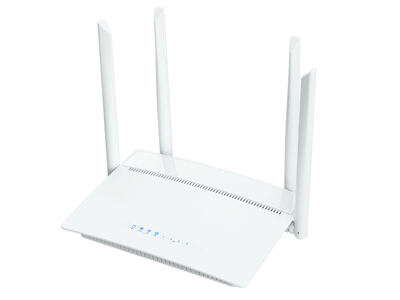Engizmalarning qo'shilishi 5G sanoat korxonalari bilan ulanish o'yinni o'zgartiradi va ilgari bo'lmagan avtomatlashtirish, real vaqt rejimida ma'lumotlarni tahlil qilish hamda operatsion samaradorlikka erishish imkoniyatlarini ochadi. Shu bilan birga, bunday yangi darajadagi giper-ulashuvchanlik zavod maydonini kiber xavf-tahdidlarning keng doirasiga qarshi nozik holatga soladi. Bunday muhitni xavfsizlashtirish jarayoni 5G sanoat tarmoqlarining maxsus talablariga mos keladigan mutaxassislarning strategiyasini talab qiladi.
Kiberxavfsizlik qiyinchiliklarini tushunish
An'anaviy fabrikalar tarmog'i alohida bo'lib, o'zlarini himoya qilish uchun havoga o'ralgan tizimlardan foydalanadi. 5G bu paradigmani buzadi, chunki u simsiz ulanishlarni ochadi, bu kuchli bo'lsa-da, hujum yuzasini eksponentli darajada oshiradi. Asosiy muammolar - bu oson kirish nuqtalari bo'lishi mumkin bo'lgan sanoat IoT (IIoT) qurilmalarining o'sishi, tarmoq orqali uzatilgan ma'lumotlarning sezgirligi va zararli faoliyat tufayli muvaffaqiyatsizlikka uchramasdan juda ishonchli va past kechikishlilikli aloqa zarurligi.
Kuchli himoya qilishning amaliy usullari
Asosiy ishlab chiqarish jarayonlarini himoya qilish uchun amalga oshirilishi kerak bo'lgan xavfsizlik strategiyasi ko'p qatlamli strategiyadir.
Sanoat IoT qurilmalarini himoya qilish
Har bir ulangan sensor va IIoT qurilmasida zaiflik mavjud. Qat'iy inventarizatsiya va boshqaruv siyosatini o'rnatish. Andoza parollarni o'zgartirish, doimiy ravishda dasturiy ta'minot paketlarini o'rnatish va foydalanilmayotgan xizmatlarni o'chirib qo'yish. Tarmoqga faqat vakolatli qurilmalar kirishi uchun samarali qurilma identifikatsiyalarini boshqarish.
Ma'lumotlarni tranzitda himoya qilish
Ishlab chiqarish va jarayon ma'lumotlari yuqori sezgirlik darajasida shifrlanishi kerak. Garchi 5G-da AES-256 kabi standart shifrlash tizimi o'rnatilgan bo'lsa-da, juda nozik ma'lumotlar qo'shimcha chekka-chekka shifrlash bilan ta'minlanishi kerak, bu erda ma'lumotlar chet qurilmasida va dastur serverida ta'minlanadi. 5G tizimining alohida tuzilmalarida yuqori darajadagi shifrlash protokollaridan foydalanish, shu jumladan foydalanuvchi rejasi yaxlitligini himoya qilish. Eng nozik ma'lumotlar va eng muhim boshqaruv buyruqlari uchun qurilmadagi ma'lumotlarni dastur serverigacha himoya qilish uchun bir nechta qo'shimcha oxiri-uchri shifrlash qatlamlarini joriy etish mumkin.
Nol ishonch arxitekturasini joriy etish
Zamonaviy sanoat tarmog'ida ishonch hech qachon nozik bo'lishi mumkin emas. Nol ishonch talabi tarmoq perimetri ichida yoki tashqarisida joylashgan qurilmalar va foydalanuvchilarning hech biriga identifikatsiya qilish va xavfsizlik holatini qat'iy tasdiqlashdan oldin kirishga ruxsat berilmaydi. Bu tarmoqni kichik va alohida sohalarga bo'lib, hujumchilarning keyingi tomonlama harakatini oldini olish uchun iste'molga olingan zararlanishni izolyatsiya qilish uchun mikrosegmentatsiyani o'z ichiga oladi.
SMAwave qanday qilib ichki xavfsizlikni integratsiya qiladi
Xavfsiz infratuzilma har qanday kiberxavfsizlik tizimi uchun muhimdir. SMAwave ning sanoat 5G terminali shu xavfsizlikga asoslangan holda yaratilgan. Ular mustahkamlangan qurilmalar platformasini taklif qiladi va yangi xavflarni oldindan kurashish uchun kuchaytirilgan va birlashtirilgan xavfsizlik xizmatlarini o'z ichiga oladi. Bu ichki bardoshlilik nol ishonch arxitekturasini amalga oshirishni osonlashtiradi, chunki u identifikatsiya xavfsiz autentifikatsiyasini ta'minlaydi va ulanishning o'sha chegarasida tarmoq segmentatsiya siyosatini rag'batlantiradi.

